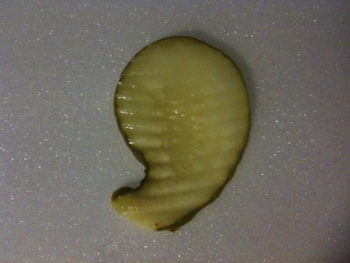Commas-in-chief Posted by Bjørn A. Bojesen on Jan 31, 2022 in Grammar
Komma er rare. (Commas are strange.) Du skriver dem, men du hører dem ikke. (You write them, but you can’t hear them.) Well, sometimes you do hear them, as little pause/r (breaks) when people talk. In written Norwegian, a comma might be a matter of life and death, so let’s take a crash course!1Please note that I might get my commas wrong in English. 😉 🙂
As in English, you use commas in order to avoid having multiple ”ands” in lists. Instead of ”saft og vafler og smør og sukker og syltetøy” (juice and waffles and butter and sugar and jam) you replace every og, except for the last one, with a comma:
saft, vafler, smør, sukker og syltetøy
Please note that it’s one separator or the other – ”Oslo, Bergen, og Trondheim” is wrong in Norwegian.2Unlike English, the language has got no ”Oxford comma”. It should be: Oslo, Bergen og Trondheim.
A less whispery alternative to brackets, commas are also used to insert extra explanations or comments in phrases:
Beate kommer også. (Beate will also come.) > Beate, naboen min, kommer også. (Beate, my neighbour, will also come.)
Familien liker å reise. (The family likes to travel.) > Familien liker å reise, spesielt til Syden. (The family likes to travel, especially to Southern Europe.)
You can also use a comma, combined with one of the four words og, eller, men, for (and, or, but, for)3So-called conjunctions, to join two sentences that would otherwise be separated by a full stop:
Kari leser. Ola ser på TV. > Kari leser, og Ola ser på TV. (Kari reads, and Ola watches TV).
Vi må vaske klær. Vi liker det ikke. > Vi må vaske klær, men vi liker det ikke. (We have to wash our clothes, but we don’t like it.)
Some sentences can’t stand on their own – they’re dependent on another sentence in order to make sense. If you stay is a full sentence (with a subject and a noun), but it calls for the help of another sentence (such as we’ll be very happy). Another example of a leddsetning (subordinate clause): …that it’s bad for your health.
Once you get what a leddsetning is, the comma rules are easy in Norwegian:
• If the leddsetning comes before the main clause, it’s followed by a comma: Når det snør, synker temperaturen. (When it snows, the temperature falls.)
• If the main clause comes firsts, there’s no comma: Temperaturen synker når det snør.
The life-and-death matter to which I war referring above:
Heng ham ikke vent til jeg kommer.
Depending on where you put the comma, the phrase either becomes:
Heng ham ikke, vent til jeg kommer. (Don’t hang him, wait until I come.)
Or:
Heng ham, ikke vent til jeg kommer. (Hang him, don’t wait until I come.)
- 1Please note that I might get my commas wrong in English. 😉
- 2Unlike English, the language has got no ”Oxford comma”.
- 3So-called conjunctions

Build vocabulary, practice pronunciation, and more with Transparent Language Online. Available anytime, anywhere, on any device.




